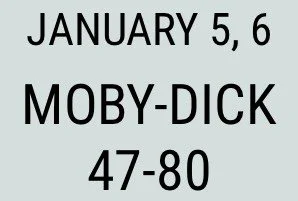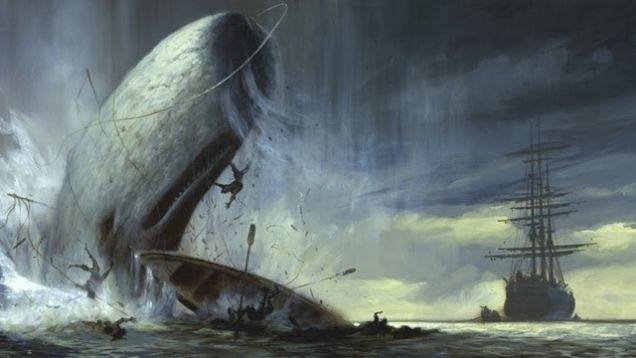melville, moby-dick, section 3
meeting 1: exam review
Welcome back. It’s your final semester before college. What do you still want to accomplish at Strake Jesuit? What could possibly be left to learn? Let’s start with a poem. Who are those who walked by your side the most throughout your time at SJ? For whom are you most grateful?
First things first: I’ll set the first vocabulary and sentence composition assignment of the term. No, those aren’t going anywhere. Note that we’re skipping list 8.
I’m going to return everything from the end of last semester, and we’ll take a look at a few of the stronger short story essays and prose analyses.
At the end of class we’ll jump into some of the latest chapters of Moby-Dick.
HW: Finish reading the latest section of Moby-Dick. You have a quiz at the beginning of our next class. Pay particular attention to the Ishmaelian launches.
meeting 2: ISHMAEL’S metaphysics
“To Ishmael” is to break free of the ordinary and into the extraordinary, to break out of the physical realm and into the metaphysical realm. Today we’ll look at some of the more famous examples of this. The ultimate question we need to answer: Why does Melville include these chapters?
Let’s focus on the sword-mat, brit, the whale-line, the dart, the whale as a dish, the blanket, the monkey-rope, the sperm whale’s eyes, the brow of the whale, and marvel at Ishmael’s conclusions.
HW: Begin brainstorming for your original chapter.
meeting 3: the novel so far
For each of the following, be able to explain your approach to answering the question.
What is this book? Explain with evidence.
Whose story is this, and why might that matter? Explain with evidence.
Are we meant to see parallels between Ahab and Ishmael? If Ahab chases the white whale, what does Ishmael chase? Explain with evidence.
In what ways do the Town-Ho's story and the Jereboam's story reflect the situation aboard the Pequod? Why include the stories of the gams? Explain with evidence.
Which chapters might we pair together to arrive at a thematic conclusion? Why? How so? What’s that conclusion? Think, for example, about the novel’s two sermons.
due DATES
syllabus
cyclical vocabulary and sentence composition assignment
CURRENT TEXTs TO HAVE DAILY
Moby-dick central
You’re undertaking the reading of the greatest work of American fiction and one of the world’s greatest works of art. It’s a project that’ll span the entirety of the year, completing the reading outside of class and in addition to your other regular assignments. It’s an undertaking to read this novel, to be sure, but it need not be arduous if you’re disciplined.
An undertaking, yes, but that does not mean you should simply set it down and walk away when you hit a tough or a boring chapter. It’s a rewarding book to those who work the hardest and put in the time it requires. This section of the course page provides you the tools you’ll need to work the novel through to its completion.
Here is a handy document you might consider printing and having with you while you read: Allusions in Moby-Dick
You may find it useful to use the audio recordings from The Big Read; each chapter has a special guest reading it. Listening along will help, especially at the beginning. The readers are (mostly) excellent at capturing the tone of each chapter. As you read, seek out and consider the following concepts:
Water meditations and man's attraction to water, Ishmael's curiosity about and tolerance for human motivation, The quest, The nature of God and man, Finding and losing the self (Narcissus), Parallels between land and sea, Civilization and "savagery", cannibalism, Biblical echoes and references: Jonah, Job, Ahab, Elijah, Ishmael, etc., Monomania and madness, the value of religion, the value of community
“There are certain queer times and occasions in this strange mixed affair we call life when a man takes this whole universe for a vast practical joke, though the wit thereof he but dimly discerns, and more than suspects that the joke is at nobody’s expense but his own.”
















